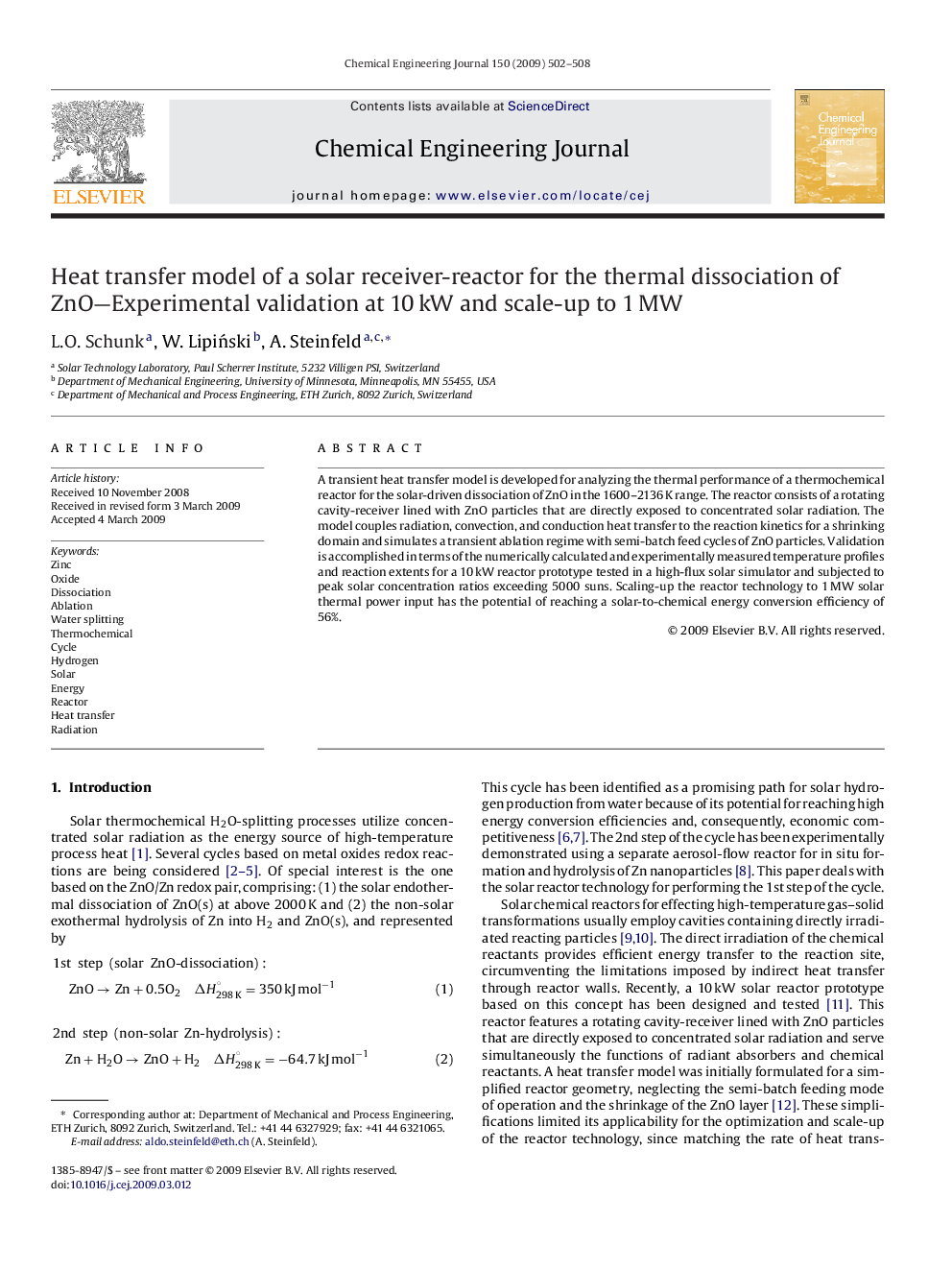| کد مقاله | کد نشریه | سال انتشار | مقاله انگلیسی | نسخه تمام متن |
|---|---|---|---|---|
| 152826 | 456509 | 2009 | 7 صفحه PDF | دانلود رایگان |

A transient heat transfer model is developed for analyzing the thermal performance of a thermochemical reactor for the solar-driven dissociation of ZnO in the 1600–2136 K range. The reactor consists of a rotating cavity-receiver lined with ZnO particles that are directly exposed to concentrated solar radiation. The model couples radiation, convection, and conduction heat transfer to the reaction kinetics for a shrinking domain and simulates a transient ablation regime with semi-batch feed cycles of ZnO particles. Validation is accomplished in terms of the numerically calculated and experimentally measured temperature profiles and reaction extents for a 10 kW reactor prototype tested in a high-flux solar simulator and subjected to peak solar concentration ratios exceeding 5000 suns. Scaling-up the reactor technology to 1 MW solar thermal power input has the potential of reaching a solar-to-chemical energy conversion efficiency of 56%.
Journal: Chemical Engineering Journal - Volume 150, Issues 2–3, 1 August 2009, Pages 502–508